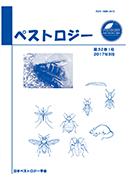Volume 23, Issue 2
Displaying 1-7 of 7 articles from this issue
- |<
- <
- 1
- >
- >|
Original
-
Article type: Article
2008 Volume 23 Issue 2 Pages 39-45
Published: October 31, 2008
Released on J-STAGE: April 10, 2019
Download PDF (8856K) -
Article type: Article
2008 Volume 23 Issue 2 Pages 47-52
Published: October 31, 2008
Released on J-STAGE: April 10, 2019
Download PDF (8621K) -
Article type: Article
2008 Volume 23 Issue 2 Pages 53-57
Published: October 31, 2008
Released on J-STAGE: April 10, 2019
Download PDF (7732K)
Technical Notes
-
Article type: Article
2008 Volume 23 Issue 2 Pages 59-62
Published: October 31, 2008
Released on J-STAGE: April 10, 2019
Download PDF (5595K) -
Article type: Article
2008 Volume 23 Issue 2 Pages 63-69
Published: October 31, 2008
Released on J-STAGE: April 10, 2019
Download PDF (9896K) -
Article type: Article
2008 Volume 23 Issue 2 Pages 71-74
Published: October 31, 2008
Released on J-STAGE: April 10, 2019
Download PDF (5713K) -
Article type: Article
2008 Volume 23 Issue 2 Pages 75-80
Published: October 31, 2008
Released on J-STAGE: April 10, 2019
Download PDF (7510K)
- |<
- <
- 1
- >
- >|
